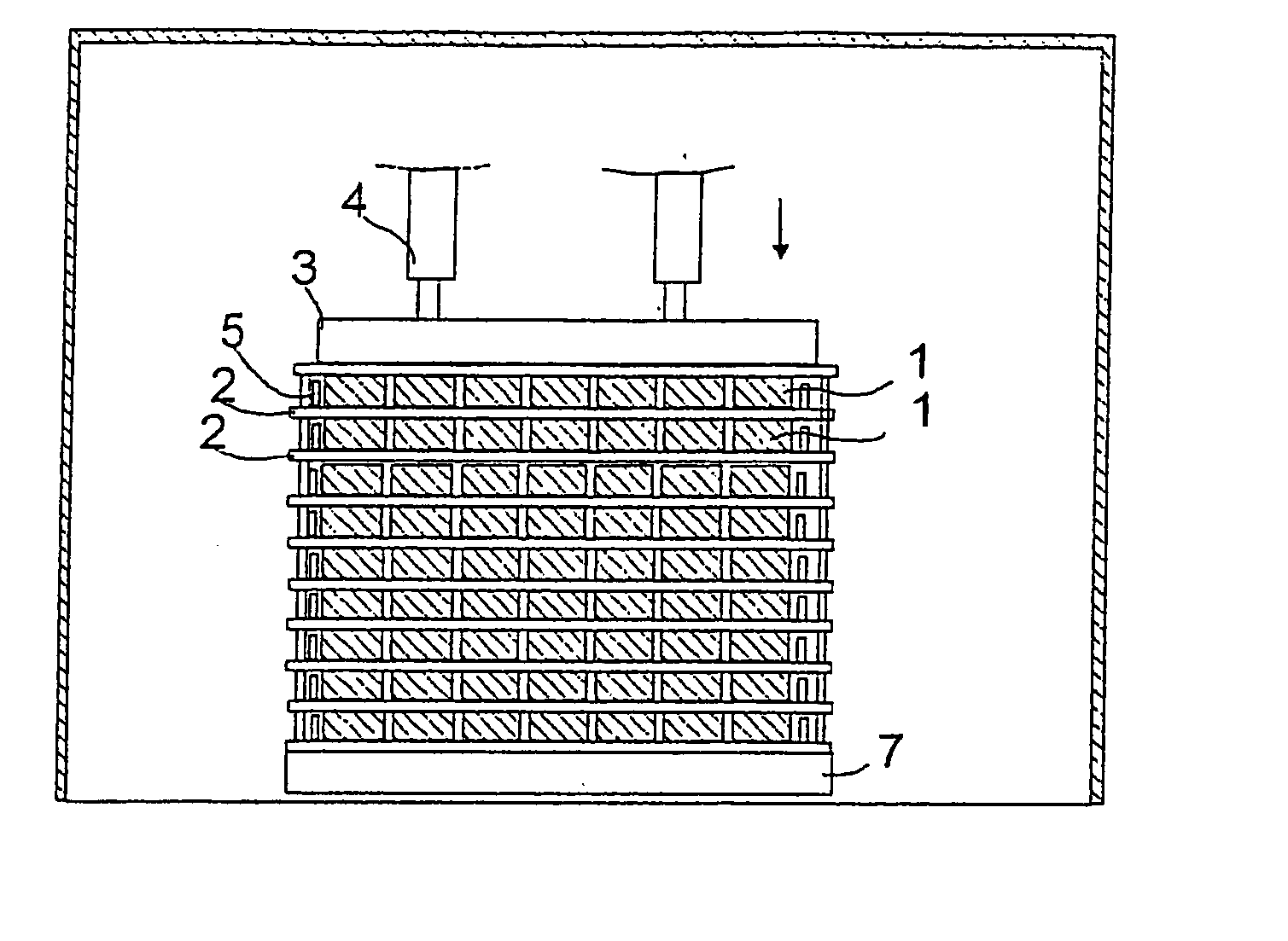Method and apparatus for the treatment of wood or wood products
a technology for wood products and methods, applied in the direction of lighting and heating apparatus, wood compression, drying, etc., can solve the problem of high energy required during the drying phase, and achieve the effect of saving time and energy, small amount of heat, and the same capacity
- Summary
- Abstract
- Description
- Claims
- Application Information
AI Technical Summary
Benefits of technology
Problems solved by technology
Method used
Image
Examples
example
[0053] A number of fresh veneer sheets, e.g. 9 sheets, are set one upon the other and a binding agent, such as glue, is applied in each interspace. The binding agent has the property of being thermally activable, so that it is only activated e.g. at a temperature of 130-140° C. The veneer is at first dried at a temperature of 895-105° C. and under a low compression pressure. Once the veneer is sufficiently dry, the temperature is increased to 130-140 degrees and at the same time the compression pressure is increased. All this takes place during the same process, preferably also in the same space.
[0054] The method and apparatus of the invention can be used for the drying of timber, and if desired it can also be used for the production of compressed wood board. In addition, it can be used for the manufacture of sandwich boards, such as plywood boards. The drying of veneer sheets and the attaching of veneers superimposed in layers by using a binding agent or by pressing together to pr...
PUM
| Property | Measurement | Unit |
|---|---|---|
| temperature | aaaaa | aaaaa |
| temperature | aaaaa | aaaaa |
| temperature | aaaaa | aaaaa |
Abstract
Description
Claims
Application Information
 Login to View More
Login to View More - R&D
- Intellectual Property
- Life Sciences
- Materials
- Tech Scout
- Unparalleled Data Quality
- Higher Quality Content
- 60% Fewer Hallucinations
Browse by: Latest US Patents, China's latest patents, Technical Efficacy Thesaurus, Application Domain, Technology Topic, Popular Technical Reports.
© 2025 PatSnap. All rights reserved.Legal|Privacy policy|Modern Slavery Act Transparency Statement|Sitemap|About US| Contact US: help@patsnap.com



